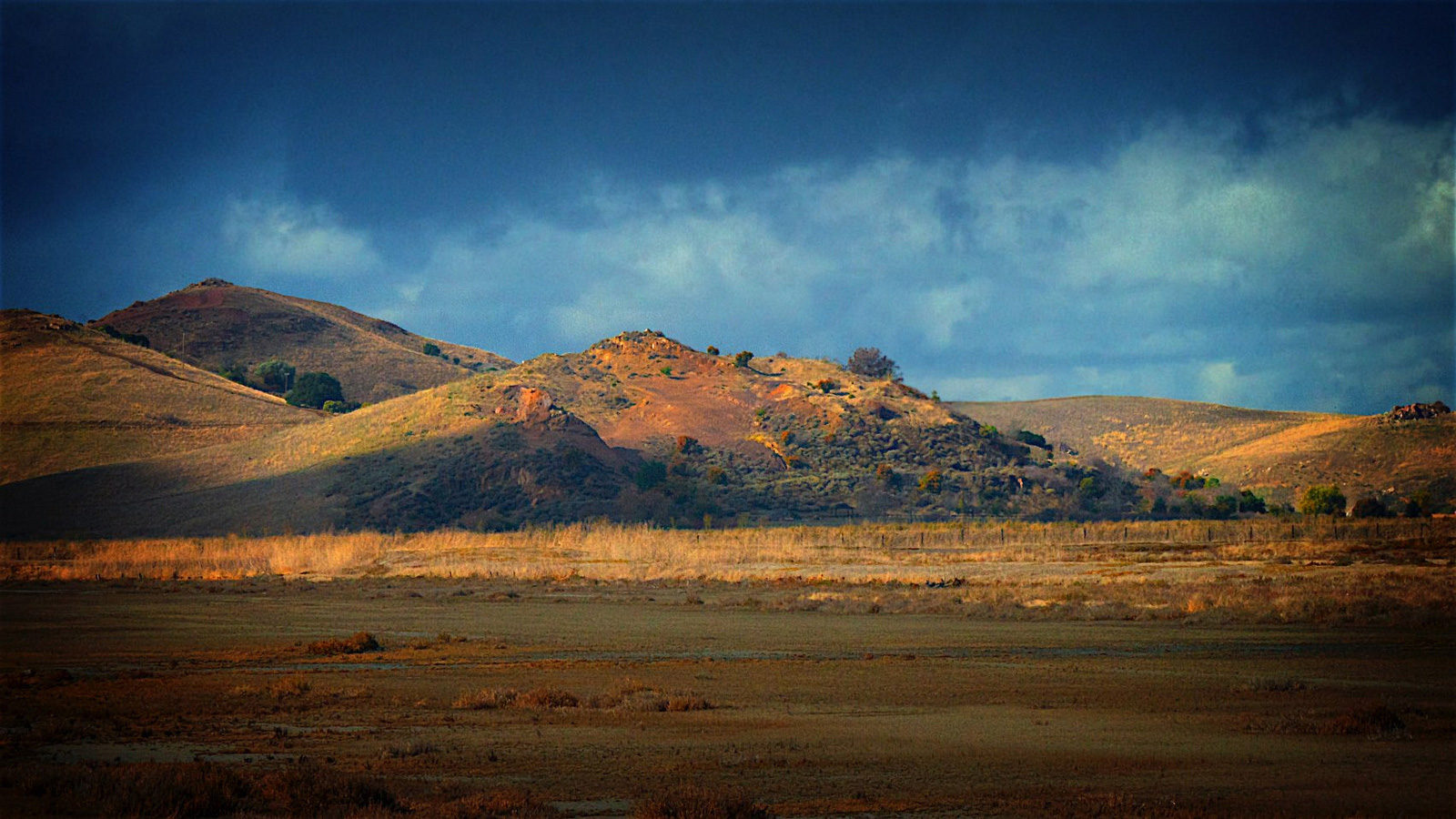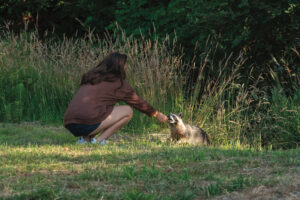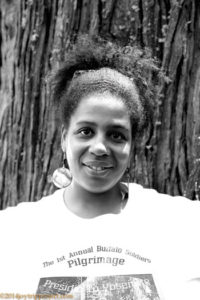Unless you’re Ohlone, Bay Miwok and/or Delta Yokut, you’re an immigrant to the East Bay. My family and I are no exception. We emigrated to the United States from the Philippines in 1981 when I was five years old.
I remember spending a lot of time outdoors in my homeland. My two older brothers and I would explore expansive farmland surrounding our home, watch massive water buffalo (carabao in my native Tagalog) work the rice fields, and fall asleep to the cacophony of insects and birds that filled the night. We moved to Union City, where many other Filipinos settled, living with extended family and enjoying the constant company of cousins, aunties and uncles. It seemed like every weekend, we were having family parties, oftentimes in local parks and backyards of family members, eating food cooked outside like lechon (roast pork), lumpia and fish. Despite never going camping as a kid, I bugged my parents every summer to buy me a tent and sleeping bag so I could. I was especially envious of all my friends from school who would go camping during their summer vacations and tell me stories about seeing animals such as coyotes and deer, roasting marshmallows over the fire, and sleeping out under the stars.
My family considered sleeping outside in a sleeping bag and tent silly and unnecessary, especially when we had a nice warm bed to sleep in at home. Instead of conventional camping trips, we took long road trips to visit family in Oregon and Canada, and slept in rest stop parking lots. I remember seeing the constellations and stars for the first time without the city lights to obscure them. My mom would set up a rice cooker at the rest stop bathroom and we’d eat chicken adobo and rice.
This was my family’s version of camping and enjoying the outdoors, and I found that I certainly wasn’t alone in establishing a love for nature as a young immigrant to the Bay Area. As I learned more about my culture, I discovered that we did spend a lot of time outdoors. Filipinos have been in the western hemisphere, working outdoors, oftentimes forced as slaves to do so, since the 16th century. As Spanish slaves, we made contact with the Chumash people in present-day Morro Bay while traveling in Manila galleons. Whole communities of eight generations of Filipino-Americans established themselves in the Gulf region, working on shrimp and fish boats. And Filipinos were vital in the formation of the United Farm Workers (UFW) in the Central Valley of California in the 1950s and 60s.
Despite this long storied history of working and being outdoors, I never saw our version of connecting to the outdoors represented anywhere on TV, movies or newspapers. In the media, in the sciences, in conversations and histories about how people connected to nature, there have always been the stories from those kids that went camping and saw deer and coyotes and cooked marshmallows. There have only rarely been pictures or stories from the immigrant kids who grew up cooking adobo in the rest stop bathroom, even if I’ve since learned that our experience isn’t rare. Sometimes I still feel like an outsider in the outdoors world even if, as I grew up, I became part of it.

My choice to join and stay in this world was tough. Sometimes as an Asian-American, it feels like we’re not just outsiders among the white folks who dominate the conservation and natural sciences communities, but we’re also outsiders in a culture that expects us to become doctors, nurses, or lawyers. I struggled between two worlds, one of expectations and the other of under-representation.
My brothers and I went on to graduate from UC Berkeley. One became an accountant, the other a computer engineer, and I thought about being a doctor. But instead, I became a naturalist, environmental educator and park ranger. Starting out, there were very few people that looked like me among my fellow employees, and a lot of white, blond-haired folks graced the covers of outdoor magazines, commercials and park brochures.
After 25 years of working outdoors, I’ve learned things were never so black and white. I was thrilled to see fellow Filipino park rangers and educators working at Angel Island Immigration Station, Crissy Field Center, Heron’s Head Park and Point Reyes. In addition to park workers, I’ve met many folks who identify as part of the LGBTQ community, people with different abilities, body shapes and sizes that go hiking, climbing and other outdoor activities. The biodiversity of flora and fauna in California, especially in wetlands and estuaries, is mirrored by the diversity of people who live here. Despite this incredible biodiversity, the cultural diversity of ethnicities, religions, genders (including gender non-conforming) and differing abilities are not proportionately reflected in boardrooms and managerial levels at many park agencies and community-based organizations. Now I’m joining many of those people I met along the way as part of an upswell of organizations looking to diversify their ranks.
I was recently appointed as the steering committee chairperson for an environmental education collaborative called ChangeScale, a nonprofit that prioritizes ensuring that our member organizations’ boards and staff, especially in executive and managerial levels, are a direct reflection of the people they serve. We just hired a new executive director, Leslie Parra, a Latinx who has worked in the Mission District of San Francisco for many years providing STEM education to under-resourced schools. We’ve hired Rebecca Au, an immigrant from Vietnam with a passion for the outdoors despite being discouraged by her parents from working for nonprofits, something many Asian-American parents (including mine) do to steer them towards more lucrative careers. Together, we’ve been working to bridge the gap between the number of brown, black and indigenous people who use the parks — for recreation, therapy, and for many native folks, ceremony — but do not actually work in them.
A good Filipino-American friend of mine, Dee Rosario, worked for decades as a park supervisor in the East Bay. Now, he is a board member for the park agency he once worked for. That’s one example of a success story, but unfortunately Dee’s situation is more the exception than the rule. Another good friend, Jack Chin, who has worked for many years as an environmental education foundation consultant, saw this divide and suggested that on social media (I go by @rovingramenriceranger on Instagram; I not only love the outdoors, but I also got love for ramen and rice), I start using a hashtag he created – #asianoutsider.
I remember hiking Mt. Tamalpais for the first time in the early ‘90s. I wore flip-flops, a T-shirt and a fanny pack to hold my water bottle. I got lots of strange looks from people hiking the trail, many of whom wore expensive boots, were lathered from head to toe with sunscreen and had a backpack so full of gear, it looked like they were going to spend the night on the mountain. This immediately made me feel like an outsider, so I bought old boots from the thrift store and hiked the same route the following weekend. I got less looks, but still felt uncomfortable not seeing other people who looked like me on the trail. I felt like an Asian outsider.
Today, I follow the lead of outdoor luminaries like José González, founder of Latino Outdoors, who wears his native Mexican huaraches while out hiking. CJ Goulding, a brother who works for the Natural Leaders Network, rocks Air Jordans when he’s out in nature. I proudly hike with my tsinelas (pronounced chinelas) or sandals, because that’s what I feel most comfortable in. And I use the hashtag #asianoutsider whenever I post on social media, to highlight the fact that I’m privileged enough to be working outside, but also honoring my ancestors, my contemporaries and other Asian-Americans who have been excluded from the conversation as outsiders themselves.
I recently paid a visit to Manzanar National Historic Site in the Eastern Sierra, where more than a hundred thousand Americans of Japanese descent were incarcerated in World War II. What really resonated with me was the stark contrast of human cruelty and exclusionary measures occurring in this beautiful backdrop of the Sierra Nevada mountain range, the ancestral land of the Paiute and Shoshone, who themselves were excluded and forcibly removed from their homeland.
Meanwhile, in nearby Bishop and the Alabama Hills, there are rockclimbers from all backgrounds — black, brown, native, white and Asian folks like myself enjoying the outdoors. My teenage daughters recently took up climbing and are loving it. They are starting to see more people that look like themselves in the outdoors – climbing, backpacking, camping and kayaking. I tell them stories about growing up in the Philippines, how many of my fellow Pinay and Pinoy colleagues are holding it down in the outdoors, and how privileged we are to be a part of this movement shifting the narrative, helping to remove exclusionary barriers, and conserving and protecting these beautiful open spaces that we can all enjoy.



